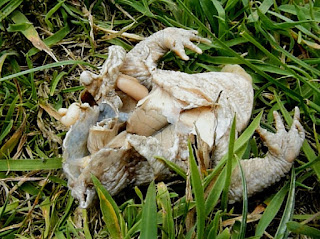 Allopatric Speciation:
Allopatric Speciation:Allopatric Speciation occurs when geographical barriers cause groups of the same species to become separated. Once separated these groups survive in differing environments, evolve and adapt to their surroundings, their genes change due to mutation, gene flow and genetic drift etc, and become genetically different to the original population enough to be classed as separate species.
To give an example, imagine a population of deer survive on a wide-stretching area of land, but due to geographical changes a river forms in between the area of land, causing one group of deer to be isolated from the other members of the population. This separated population is now subjected to natural selection in its own environment, random genetic mutations that constantly occur, while being unable to swap genes with their original population as they could before. This leads to them becoming more varied than the old population, and if at some point the river barrier were to disappear and allow them to have contact with their old species, they may be too genetically different to be able to reproduce and create viable offspring, making them a new species.
Sympatric Speciation:
Sympatric Speciation, unlike with Allopatric Speciation, can occur within populations without the need of geographical barriers to isolate populations.
For Sympatric Speciation to occur, separate ecological niches must usually develop first. An ecological niche is an organisms interactions with its biotic and abiotic environment, and by changing or developing a variation in its ecological niche relative to the other members of its species, sympatric speciation can happen.
For example, say there is a population of small birds that only feed on a berry from one species of plant. Then due to a random mutation in one birds DNA, it decides to start feeding on a different berry from another species of plant. If this new plant is of benefit to the bird it will survive, and it will produce offspring that also have the trait causing them to feed from a different food source. As this lineage evolves to survive on this new food source .i.e. develops a bill shape to improve feeding, digestion changes to accommodate the new foods source etc, a new species could slowly evolve through the generations that is unable to mate with the original species.
-Thomas Glen
Images: Thomas Glen






























